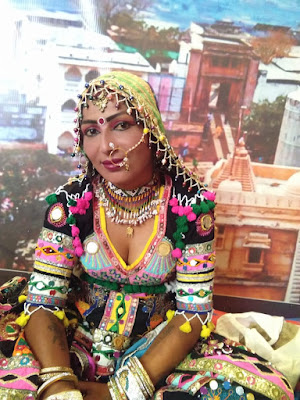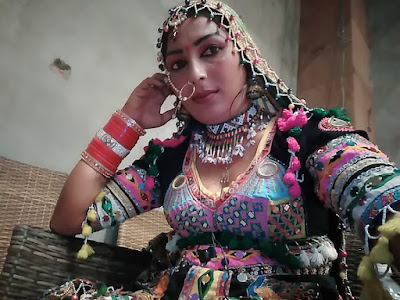Our "Kalbeliya Dancer" channel is dedicated to Cobra Gypsy Kalbeliya artists, Rajasthani folk songs, folk dances, folk music and rural culture.
Kalbeliya (Cobra Gypsy) tribe (Adivasi) are disciples of Guru Gorakhnath. The largest population of Kalbeliya is in Pali, Jalore district, then in Barmer, Jaisalmer, Jodhpur, Ajmer, Chittorgarh and Udaipur districts. They lead nomadic lives. They use a variety of instruments such as the Pungi, a wooden instrument played traditionally to catch snakes, during the performance, with men wearing colorful "safa" (turban) their traditional musical instruments, dafli, Gaya, Khanjari - A rhythm instrument, morchang, kuralio and dholak, the chang on which the dancers perform. Their community costumes in folk dances are similar to those of the serpents. They are basically snake charmers. It holds the intangible cultural heritage of humanity in India. Rajasthani people feel a deep connection with this tribe.
The Kalbeliya snakera community is nomadic and they were known as snake charmers from the time of ancestors. Capable people were able to catch and hunt snakes, they could get snake venom out of them and also used to treat snake bites with chandeliers, native herbs. During these days they still perform snake and dance shows, their performances are very common on Indian roads. Pungi's expert musician is also known as a storyteller. His cheerful songs, bhajans, folk songs tell about the everyday life of the local people. The women of this community are very proficient in singing and dancing.
 |
| Kalbelia Dancer-amiya sapera |
The Kalbeliya snakera community is nomadic and they were known as snake charmers from the time of ancestors. Capable people were able to catch and hunt snakes, they could get snake venom out of them and also used to treat snake bites with chandeliers, native herbs. During these days they still perform snake and dance shows, their performances are very common on Indian roads. Pungi's expert musician is also known as a storyteller. His cheerful songs, bhajans, folk songs tell about the everyday life of the local people. The women of this community are very proficient in singing and dancing.
In the past, women of the Kalbeliya community danced only during religious festivals or social occasions such as Jagaran, marriage. Dance is a core part of every cultural festival and it helps women to express their incredible artistic talent. From a young age, the Kalbeliya girls have learned to dance by imitating the elders, training them almost every day to create incredible dancers as young women. Older middle-aged women usually sing traditional desert songs with musicians during the show.
Songs and dances are an expression of the traditional way of life of the Kalbeliya community. Special traditional dances are performed during Holi festival of colors. Holi's lyrics also showcase the poetic skills of Kalbeliya, who is reputed to have composed and improvised songs effortlessly during a performance. Songs and dances transmitted from generation to generation are part of an oral tradition, for which no texts or training manuals exist. Kalbeliya dance is becoming more and more famous as it is also shown outside their community, also known as "snake dance".
 |
| Kalbelia Dancer-Amiya Sapera |
Kalbeliya singers, dancers, performers perform in Rajasthan, International Folk Festival RIFF. This video channel specially includes Kalbelia Amiya Sapera & Party, Village Bithuja, Tehsil Pachpadra, Dakhi Devi of District Barmer, Shanta Devi, Gomti Devi, Jamna, Kelki, Tansa and Amiya Kalbeliya, Kishannath, Harinath etc. Kalbeliya dance, singing is quite erotic, as women rotate and dance continuously in a circle, the speed of the music increases as well as the heartbeat of the viewer and the dance, the pace of the music is completely drunk. is. Kalbeliya "Snake Dance" is the most famous dance of Rajasthan.
 |
| Kalbelia Dancer-Folk Gypsy Dance |
We want these talented artisans to display their art on big forums and their future and livelihoods are well planned, folk art and culture is fading today. The artists of the Kalbeliya dance have remained only the pride of the fair and the Magriya, while it is the museum where these arts are there, it is the living fossils that adorn these arts. Today, in the modern era, they are not filled with these arts, so these people are not putting their children in this line anymore, the government is not doing anything special for them, most of the schemes for them are only on paper. is limited.
These poor societies, artists from art-savvy capable people like you, hope to help, so try to help them as far as possible in your city, village, dhani so that this dance, singing art can survive. They say "Listen to the poor, he will listen to you, you will give a penny, he will give a million"

No comments:
Post a Comment